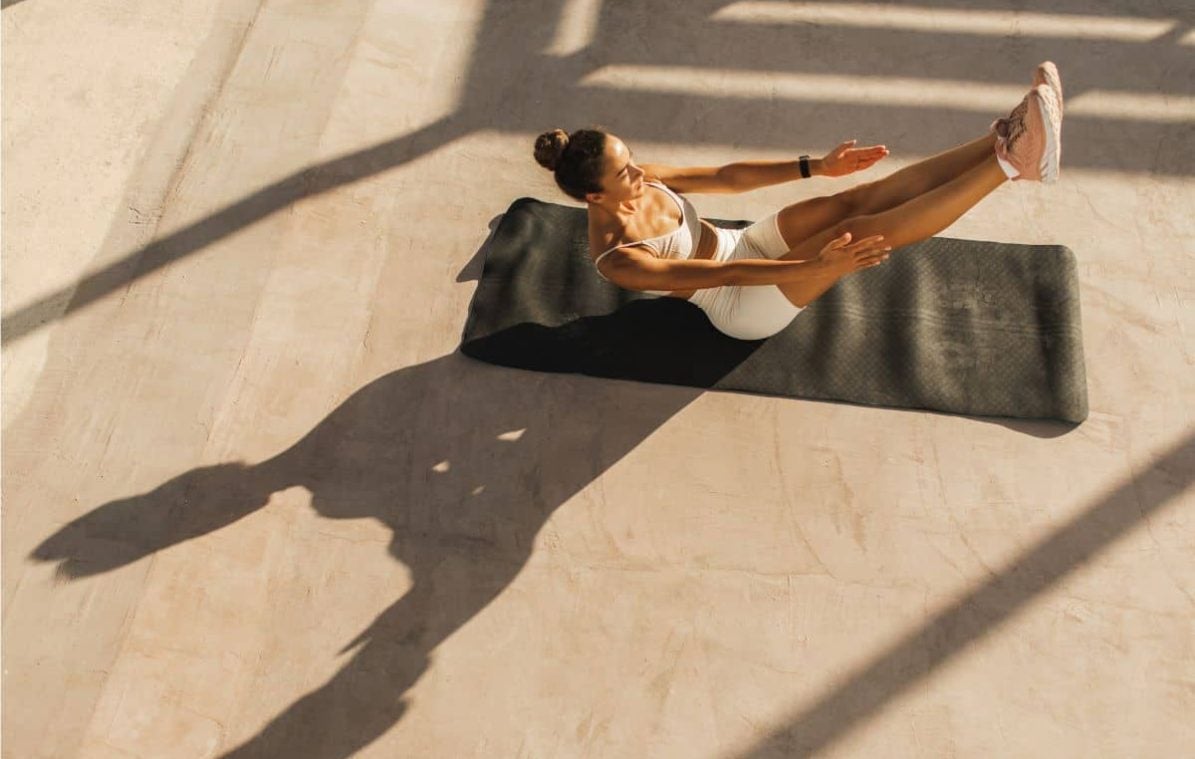How to do Russian Twists for Perfect Abs
 © foodspring
© foodspring
If you train your core often and work your abs, you already know the absolute basics of abdominal training exercises (crunches and planks, of course). But they can be boring and limited. So what else can you do to strengthen your abdominal area? The answer is Russian twists. The Russian twist is an exercise to work the abdominal muscles, especially the transverse abdominis and the internal and external obliques.
If you’re an athlete, adding more dynamic movements to your core routine is a must. A small study of elite swimmers showed that after six weeks, a four-move ab routine that included Russian twists improved their 50-meter front crawl times compared to those who hadn’t added the core work, according to research published in PLoS One.
Russian twists are performed seated with legs bent and lower back straight, working the core muscles while twisting the torso to one side and to the other. You can hold a free weight, such as a dumbbell, medicine ball or kettlebell during the exercise.
As for the name, it’s suggested that Russian twists were invented in the former Soviet Union during the Cold War as a training exercise for Russian soldiers. But since we can’t say this for sure, it’s better to report on something we do know about. So, let’s see what the benefits of Russian twists are, and how to do them perfectly.
Benefits (and risks) of Russian twists
The success of Russian twists is due to the fact that they take advantage of the core’s ability to rotate the torso, one of the key functions of this part of our body. This movement focuses on the obliques, the long muscles in your torso that are responsible for helping you flex, bend and rotate your spine. If you want a strong, symmetrical core, you need to pay attention to your obliques.
The main problem with Russian twists is that many people tend to do them too fast. This happens with lots of abdominal exercises , but in this case you have to be especially careful because it’s a very bad idea to rotate your trunk with weight. It can lead to injury, especially in the lower back, so you should only do this movement with weight if you are able to keep your spine neutral (rather than your lower back curving outwards).
How to do a Russian twist
Start using a weight you can control for 2-3 sets of 5-10 repetitions on each side. The weight should allow you to maintain a good technique throughout all sets and repetitions.
#1 Sit on the floor with your legs together and knees bent. Keep your feet on, or slightly off, the floor. You should be sitting on your pelvic bones.
2# Keeping a tall stance, lean back until your body forms a 45-degree angle with the floor. Your hips and knees should be bent at 90 degrees.
#3 Activate your core. Your chin should stay tucked in throughout the movement, as if you were holding an egg under it.
#4 Hold a medicine ball, dumbbell, disc or kettlebell, arms can be bent or straight.
#5 Slowly and in a controlled manner, twist your upper body to the right.
#6 Twist your upper body to the left. As you twist forwards and backwards, keep your lower body still.
Learn more about this topic at foodspring:
- Hatha Yoga: a style of yoga that builds strength and promotes relaxation
- 7 exercises to strengthen your oblique abs
Sources for this article
We at foodspring use only high-quality sources, including peer-reviewed studies, to support the facts within our articles. Read our editorial policy to learn more about how we fact-check and keep our content accurate, reliable, and trustworthy.





























